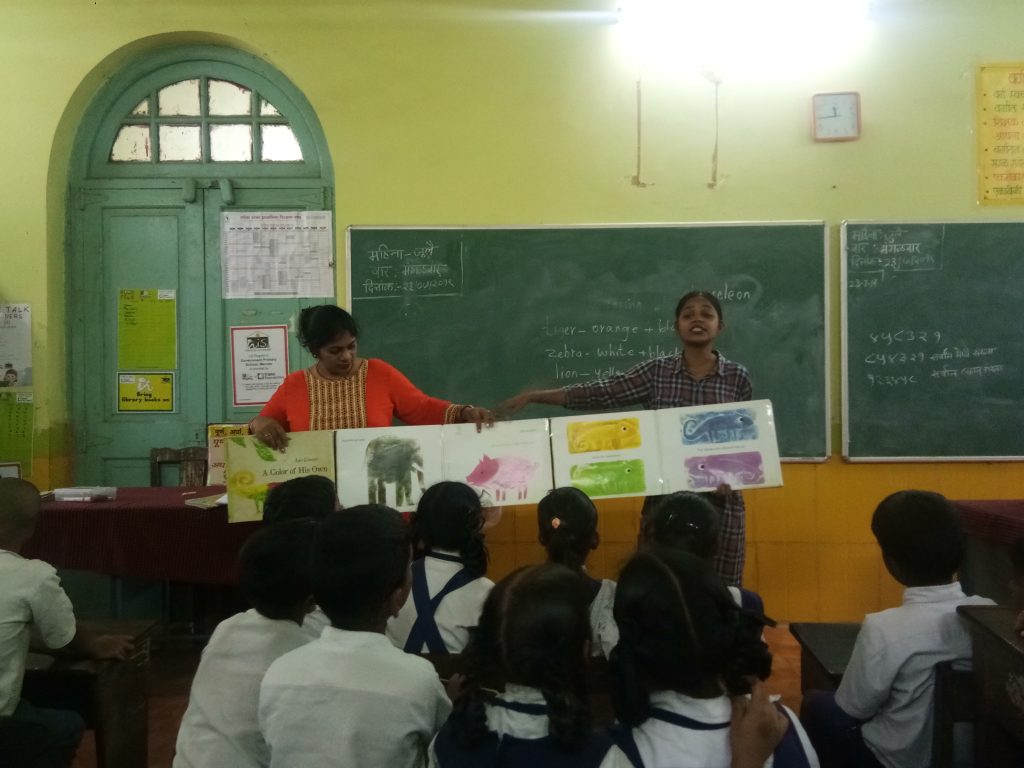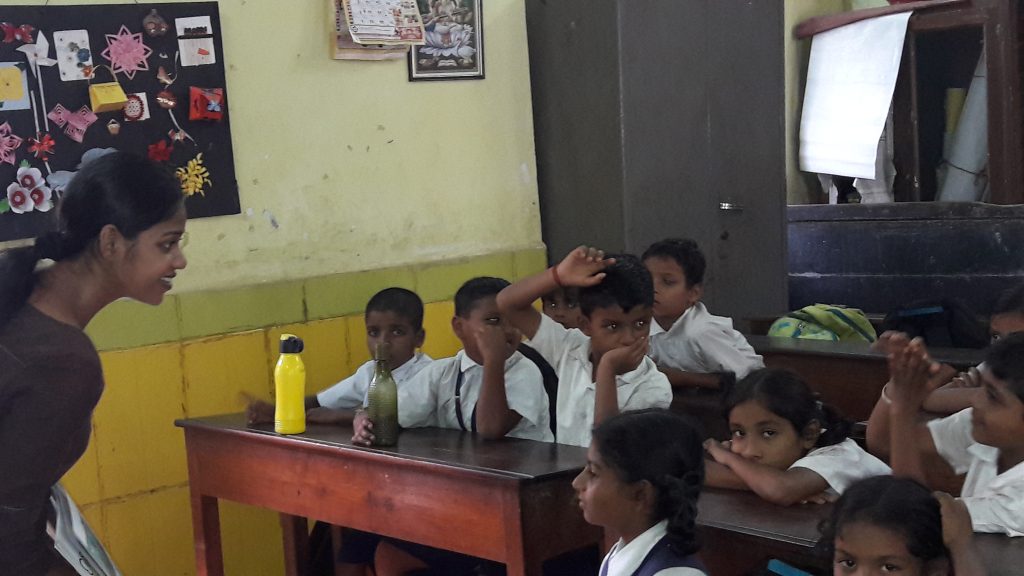One of the things that I like the most about the Libraries in Schools (LiS) program is reading aloud a story to the children. This is something that I enjoy because I like stories and sharing them with children makes me feel good. This year instead of just focusing on making sure I am reading the story well, I am also able to pay more attention to the responses the children give, while they listen to the story. This is because of the constant discussion at Bookworm about how children’s responses are important and also about my own confidence in reading stories that come grown from experience. Here are some responses to stories that have stayed with me this past week.
The poem ‘Walking Through The Jungle’ by Julie Lacome has a boy as the main character who goes into the jungle and sees different animals. The thing that surprised me was the children of Swami Vivekananda School (Borim) sharing that they cannot go into the jungle with their uniforms, since they are red and white in colour. They feel that the animals can attack when you wear red. When listening and looking at the book, they see the main character with a red colour t-shirt , they were deeply concerned that the jungle animals might eat him up. So they waited eagerly to see what would happen and were happy that he is not attacked. I was struck by how common knowledge about colour and wild animals can so easily be brought into the story and it added suspense and anticipation that I have not experienced before.
‘How Can You Hide An Elephant’, a story by Patricia Miles Martin and illustrated by George M. Ulrich, had the children from Government Primary School (Merces) wonder about the title itself. They started thinking about how one could hide an elephant who is so big. One girl said that the elephant could pull in the ears, trunk, its tail and sit like a stone. While another girl felt that, we could put many leaves on the elephant and hide him. Interestingly these are the ways in which the elephant attempts to hide in the jungle and so when the children find resonance with the plot and I find a match in my children and the story we all have a very good sense of learning.
The story, ‘The Great Goat Chase’ by Tony Bonning and illustrated by Sally Hobson is about a farmer having trouble getting his three goats out of the turnip field. The efforts of the other animals and the farmer are a waste and a tiny bee manages to do the job. This got the children to share about how they have done things even though they are small. Among the children from Swami Vivekananda School (Borim), Divyansh shared that he put on a bandage for someone even though his mother felt he won’t be able to do it. Sarva said that she has lifted a heavy load. The children in Our Lady of Merces as well shared about how they too have done things being small. Noor Afsana shared about taking care of the house in the absence of her parents. Dilkush said that he has made tea, Ayesha said that she cooked rice, Shreyan takes care of his dog and Ayyan said that he broke a wall using an axe! So what may have seemed impossible to Mr Farmer in the story, that a little bee could do big things was not impossible in my classrooms!
The story of ‘Six Crows’ by Leo Lionni made the Government Primary School (Merces) children think a bit more about how the crows would deal with the scarecrow that the farmer had built. One of the boys said that they will throw something on the scarecrow’s head and destroy it, while a few said that they will take away the legs and throw it down. It was interesting for me and the children because we often tell stories or hear stories from man’s point of view. In Six Crows the children had to think from the crow’s point of view and they were very ready for the challenge.
When I hear the responses of the children, it helps me understand their connections to the story and experience the story together with them. Allowing the children to respond during the Read Aloud makes it a richer experience through their personal connections, reactions, thoughts and responses. These responses to the story also mean that the children are attentive, following and liking the story. Every reading also enriches my learning and I have additional stories and ideas to take into the next classroom.



